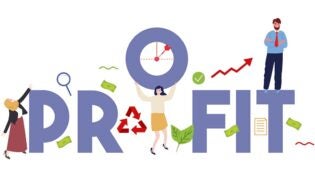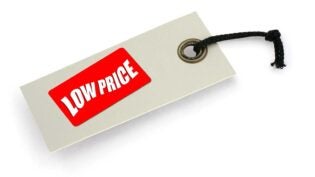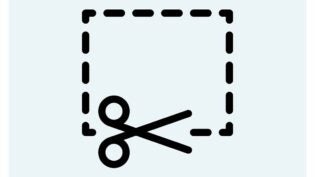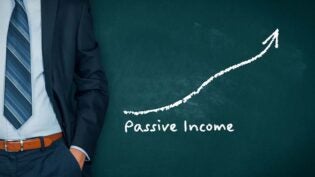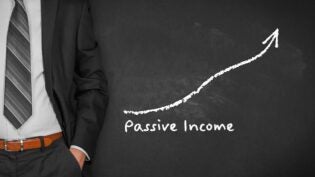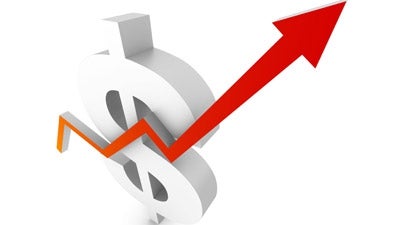
He’s right! Can you imagine a better way to focus your customers’ attention on price? So how should you go about communicating your price increases?
Raising prices
Before we answer the ‘How’ question, let’s talk about minimizing the need for these unpleasant communications. The most successful approach is to raise prices at least once per year. Why? Because these increases will be smaller in magnitude, somewhere in the vicinity of 3% to 5%.
First, customers know that prices, absent innovation that dramatically improves productivity, have to go up as costs go up. For decades Intel was doubling the capacity of its chips, which allowed customers to get faster chips while prices declined. Absent those manufacturing innovations, the price of Intel’s chips would have increased each year as labor and other costs increased.
Second, when customers view a small increase versus the time it would take them to identify and interview new vendors, risk receiving inferior quality products/service, the headaches that would ensue not to mention the potential loss of their customers, the price increase pales in comparison.
Third, if you don’t raise prices each year and then hit your customers with a 10% to 12% increase or more, you make it more worthwhile for them to suffer the search for alternatives.
Fourth, if customers are going to leave over a 3% to 5% price increase, they really weren’t much of a customer. Indeed, the likelihood is that they are your most demanding, most difficult-to-please customers. You may actually want to throw a party to celebrate their leaving.
Now that you have the secret to minimizing price resistance, let’s talk about how to communicate those increases.
Communicating annual increases
If it’s the 3% to 5% increase mentioned above, simply give your customers some advance notice. 30 days is more than adequate. By giving them advance notice you allow them time to order what they need at the lower price and avoid the objection, ‘If I’d have known I’d have ordered this earlier.’
Advance notice also helps your customers get used to the idea of higher prices and gives them the opportunity to shop alternatives if they so desire. Most won’t. Implicit in the advance notice is a statement of confidence that you’re providing quality products and services and you’re not worried about competitors.
Communicating catch-up increases
If you haven’t raised prices in several years and are considering a double-digit increase, you have to be prepared to handle objections. Your customers are not only likely to threaten a search for an alternative, they’re likely to follow through on it unless you can substantiate the value you’re providing.
Hopefully you’ve been paying attention to the good things they’ve been saying about you, your company, what they enjoy about working with you and why they enjoy your products/services. Those are the things that you’re going to use to remind your customers of the value they’re receiving.
With your largest, most enjoyable, most profitable customers, you should take the time to meet them face to face to communicate the increase. It’s a sign of friendship and respect. If a friend was going to deliver bad news to you, you’d want them to care enough about you to do so face to face rather than in an impersonal announcement.
For your other customers, again, provide no more than 30 days advance notice. Remind them that you’re giving them an opportunity to order what they need at the lower price. Then remind them of the value they’re getting from you.
Don’t denigrate your competition and don’t blame the increase on rising costs. In today’s world there’s an expectation that you’re working to increase productivity. Lower costs are a byproduct of increased productivity. Customers don’t want to pay for your inefficiencies.
Prepare your sales force and your customer service reps to remind customers of the value they’re receiving and how that value is the result of investments you’re making in innovation, talent and processes designed to provide them with an enjoyable experience. Help them relive the great experiences they’ve had over the years and they’re more likely to accept the increase without searching for an alternative.
B2B advantage
Those of you who are selling B2B have another approach available to you. Because most of your offerings are tailored to a particular customer’s needs and the price is negotiated, you can raise prices on new customers without raising them on existing customers. This approach can work in B2C as well, if the service you’re providing is customizable.
Once you’ve gained acceptance of the higher prices with new customers, you can go back to existing customers and justify your increases on the market’s willingness to pay more for the value you provide.
The key is consistently exceeding expectations. At the risk of sounding braggadocious, when I’ve used the approach just outlined and said to my clients that I’d like to discuss a price increase they’ve responded by saying, “There’s nothing to discuss, what do you want?”
I wouldn’t have gotten that response if I hadn’t consistently exceeded their expectations and put multiples of what I was getting on their bottom line. That doesn’t mean that I never made a mistake, I’m as human as everyone else.
It does mean that those mistakes were rare, that I took full responsibility for them and remedied them quickly and effectively. People are very forgiving when they know that you’re willing to admit your mistake and care enough to do whatever it takes to fix the problem.
These simple tips can help you minimize ‘sticker shock,’ get the price increase you so richly deserve and retain the customers you want. Now that’s a winning combination.
This article was originally published by Pricing for Profit
2767 Views






